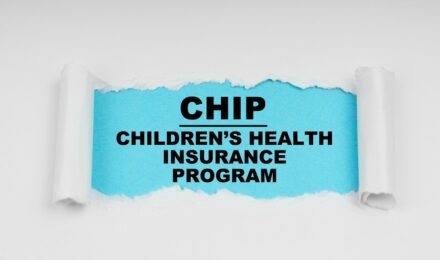Contents
The COVID-19 pandemic turned the world upside down. It disrupted daily routines, uprooted lives, and sent shockwaves through the global economy. In this uncertain time, the American Rescue Plan (ARP) was introduced as a critical measure to provide relief for struggling families and to stabilize a faltering economy. Its impact has been profound, particularly for low-income communities that bore the brunt of the crisis.
What is the American Recovery Rebate Credit?
At the core of the ARP was the American Recovery Rebate Credit, a program that became a financial lifeline for many during the pandemic’s peak. These stimulus payments, as they were commonly known, went beyond being mere financial aid. For millions, they were the difference between staying afloat and sinking under the weight of unexpected hardships.
The payments didn’t just aim to help families meet their immediate needs—they were also a carefully designed economic intervention. When people stop spending, the economy slows, and recovery becomes harder to achieve. The stimulus ensured that money kept moving, helping businesses and communities stay resilient.
American Rescue Plan: Economic Impact and Eligibility
The ARP’s stimulus payments were thoughtfully structured to address a wide range of financial circumstances. Single individuals earning $75,000 or less annually received $1,400, while married couples with a combined income under $150,000 received $1,400 each. Dependents, often overlooked in similar programs, were not left out. Even college students qualified for payments, reflecting the plan’s inclusivity.
Payments were distributed in three separate installments, ensuring a steady flow of funds rather than a one-time burst. Importantly, recipients were not taxed on these payments, making every dollar count. This thoughtful design underscored the ARP’s goal of providing real, impactful relief.
Recovery Credits: Still Available?
What if you didn’t receive your payment? Fortunately, unclaimed credits haven’t disappeared. Taxpayers who missed out for any reason—such as outdated tax records or non-filing status—can still claim these funds. This second chance ensures no one is left behind.
Here’s what you need to know: the deadline to file for the 2020 payments is 2024, while 2021 payments can be claimed until 2025. Partial payments can also be supplemented. For example, if you only received one installment or less than your eligible amount, you can still apply for the remainder. If you’re unsure how to begin, a tax professional can help you navigate the process and ensure you receive what you’re entitled to.
A Plan of Hope and Action
The American Rescue Plan was more than just a policy response to an economic crisis. It was a bold statement of empathy and action, demonstrating that even in times of profound uncertainty, there is a path forward. By delivering direct support to those who needed it most, the ARP became a powerful reminder that decisive action and collective will can light the way out of even the darkest moments.
Resources
- U.S. Treasury Department: Access comprehensive details about stimulus payments and recovery credits.
- National Taxpayer Advocate Service: For personalized assistance, visit the Taxpayer Advocate.
- Center on Budget and Policy Priorities: Explore analyses of the ARP’s impact on low-income communities and find helpful resources.
Contents
The COVID-19 pandemic turned the world upside down. It disrupted daily routines, uprooted lives, and sent shockwaves through the global economy. In this uncertain time, the American Rescue Plan (ARP) was introduced as a critical measure to provide relief for struggling families and to stabilize a faltering economy. Its impact has been profound, particularly for low-income communities that bore the brunt of the crisis.
What is the American Recovery Rebate Credit?
At the core of the ARP was the American Recovery Rebate Credit, a program that became a financial lifeline for many during the pandemic’s peak. These stimulus payments, as they were commonly known, went beyond being mere financial aid. For millions, they were the difference between staying afloat and sinking under the weight of unexpected hardships.
The payments didn’t just aim to help families meet their immediate needs—they were also a carefully designed economic intervention. When people stop spending, the economy slows, and recovery becomes harder to achieve. The stimulus ensured that money kept moving, helping businesses and communities stay resilient.
American Rescue Plan: Economic Impact and Eligibility
The ARP’s stimulus payments were thoughtfully structured to address a wide range of financial circumstances. Single individuals earning $75,000 or less annually received $1,400, while married couples with a combined income under $150,000 received $1,400 each. Dependents, often overlooked in similar programs, were not left out. Even college students qualified for payments, reflecting the plan’s inclusivity.
Payments were distributed in three separate installments, ensuring a steady flow of funds rather than a one-time burst. Importantly, recipients were not taxed on these payments, making every dollar count. This thoughtful design underscored the ARP’s goal of providing real, impactful relief.
Recovery Credits: Still Available?
What if you didn’t receive your payment? Fortunately, unclaimed credits haven’t disappeared. Taxpayers who missed out for any reason—such as outdated tax records or non-filing status—can still claim these funds. This second chance ensures no one is left behind.
Here’s what you need to know: the deadline to file for the 2020 payments is 2024, while 2021 payments can be claimed until 2025. Partial payments can also be supplemented. For example, if you only received one installment or less than your eligible amount, you can still apply for the remainder. If you’re unsure how to begin, a tax professional can help you navigate the process and ensure you receive what you’re entitled to.
A Plan of Hope and Action
The American Rescue Plan was more than just a policy response to an economic crisis. It was a bold statement of empathy and action, demonstrating that even in times of profound uncertainty, there is a path forward. By delivering direct support to those who needed it most, the ARP became a powerful reminder that decisive action and collective will can light the way out of even the darkest moments.
Resources
- U.S. Treasury Department: Access comprehensive details about stimulus payments and recovery credits.
- National Taxpayer Advocate Service: For personalized assistance, visit the Taxpayer Advocate.
- Center on Budget and Policy Priorities: Explore analyses of the ARP’s impact on low-income communities and find helpful resources.






